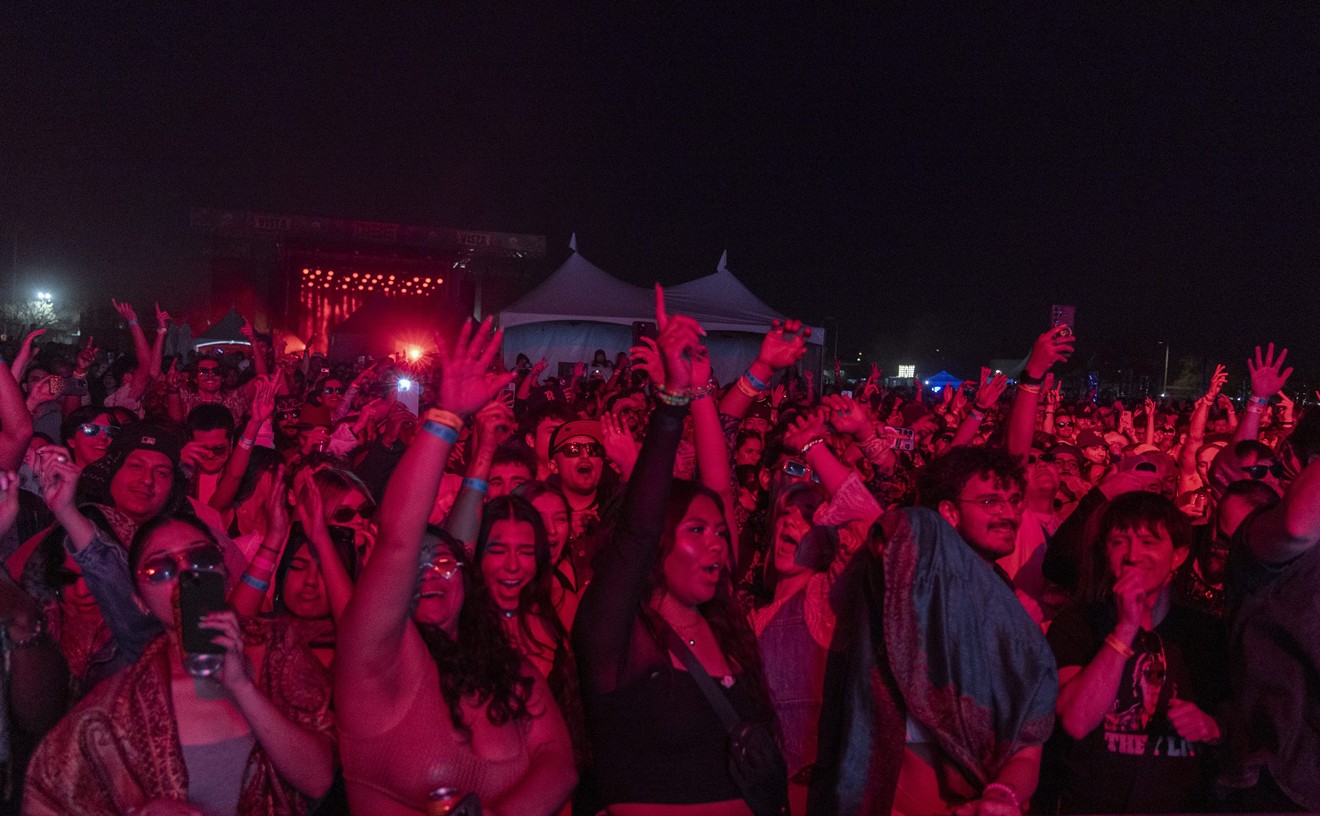In reality, Rock Fiesta — which we called “the Coachella of Latin Rock” for its two-day campout premise and impressive lineup of seminal Mexican acts — was never meant to be anything political. But how could the largest rock en español concert on American soil not take on greater significance when it’s happening in a state that has historically passed and enforced some of the strictest anti-immigration laws that have only served to make life miserable (if not hostile) for its Latino population?
And who on Rock Fiesta’s organizing team could have predicted that after two years of planning, their festival would fall right in the middle of a racially charged election season, one in which the front-runner for the Republican party has repeatedly called Mexicans “rapists” and is campaigning with rhetoric that calls for mass deportations of undocumented immigrants and the construction of a border wall?
Driving from places like Phoenix, Mexicali, L.A., Las Vegas, and Texas, the mixed-status crowd of Mexicans, Mexican immigrants, and Mexican Americans descended upon Quartzite’s Desert Gardens RV Park and Showgrounds Friday and Saturday with these issues top of mind. Some came armed with “Fuck Trump” posters and Trump piñatas; others with traditional pre-Columbian headgear and Mexican flags. Despite 100-plus-degree temperatures, everyone came ready to dance, mosh, and celebrate Mexico’s contributions to Latin rock on a level never before seen stateside.
As one of only a few gringos who made the trek to experience live performances from universally appealing Mexican bands like Kinky, El Tri, Cafe Tacvba, and Panteon Rococo all in one place, it was hard not to get swept up in the pride.
Most sets included shoutouts to to “mi gente,” “mi tierra,” and “la raza,” and more than a few punk rock middle fingers (and some hearty “culeeeeeerrrrrros”) were thrown up at every Trump reference. Rap-rock stars Molotov dedicated two of its most famous (and aggressive) songs, “Puto” and “Frijolero,” to Trump. Alex Lora, singer of blues-rock stalwarts El Tri, encouraged people to use their vote to fight back against the Republican candidate. At one point, Kinky had the audience chanting “Tenemos el poder” ("we have the power"). And during the final songs of the weekend, Caifanes told the cheering crowd, “No humano es ilegal” ("no human is illegal").
More than Coachella, Rock Fiesta felt at times like Warped Tour with a pressing purpose.
Beyond politics, however, the festival marked another major milestone for rock en español as a genre: Its U.S. audience is now formidable enough to sustain large-scale music festivals.
Though styled after Mexico City’s Vive Latino and Los Angeles’ successful single-day Latin music fests Supersonico and La Tocada, Rock Fiesta is the first time anything of this magnitude has taken place in a non-Hispanic city (as one attendee who drove, flew, then drove from South Carolina to be there, “LA is Mexico compared to where I live”).
Having Rock Fiesta as a one-day thing closer to LA might have allowed the event to sell out, but organizers took a big chance on presenting the bands over a multi-day format in Quartzite, a town of a few hundred geriatric gem lovers no less than a two-hour drive from any major city. Given the impressive lineup and historic nature of the event, Rock Fiesta was wildly under-attended (20,000 were expected yet only around 4,000 tickets pre-sold; thousands more bought tickets day-of, but a final count remained unavailable at press time), but this should not be taken as a failure.
The first Coachella missed its attendance goal by a similar margin and lost so much money it almost never happened again. What it lost in revenue, it made up for in precedent. Like Coachella, Rock Fiesta is only the start of something much greater.
Because in addition to headlining sets from major-name bands that represent Latin rock’s past, much of Rock Fiesta’s lineup was filled with bands that represent the diversity of the genre’s present and future. Heavy metal band S7N played their first U.S. show Friday afternoon, starting the weekend’s first mosh pit; Siddhartha looked and sounded more like an indie-rock band modeled after the Silversun Pickups than anything traditionally considered Latin rock; resident weirdo Silverio performed live remixes of reggaeton and Latin songs while pouring beer on himself and getting naked; and LA’s Ozomatli, together for 21 years, continues to push boundaries of Latin rock with infusions of funk, hip-hop, and punk.
By showcasing the splintering diversity of rock en español as a genre, Rock Fiesta laid the foundation for its inevitable entry into the mainstream American consciousness. It also demonstrated the continued need for festivals that fight the predominantly white status quo.
If the Afropunk Festival can go from a small concert of black punk bands in a Brooklyn park to a multi-city celebration of African American music as a whole, then Rock Fiesta can easily become the Latin American response to the dominance of English-language rock.
The only question left now is whether or not it will happen again next year.









